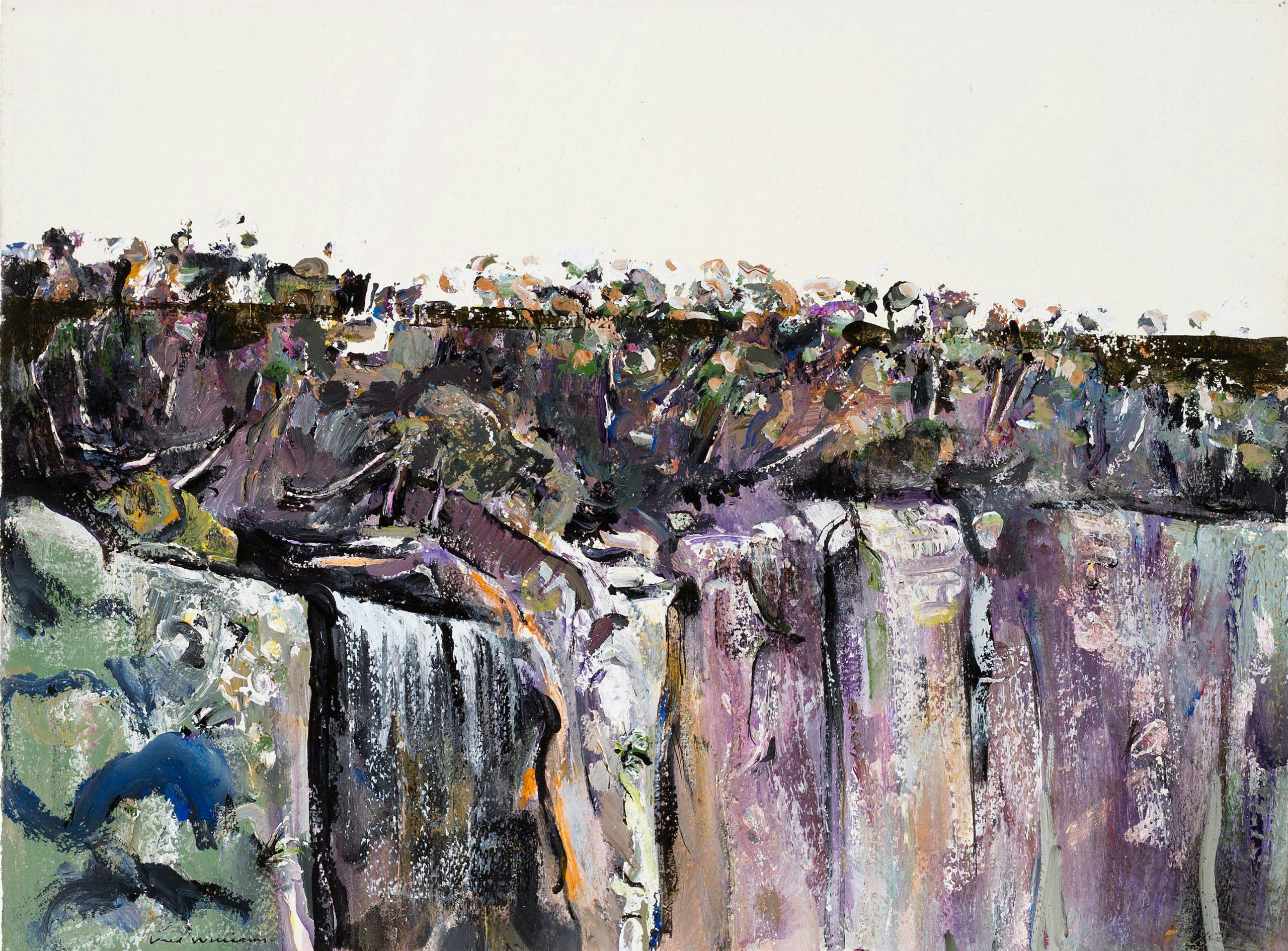Albert Tucker and Fred WilliamsThe Springbrook Landscapes
Fred Williams, Cliff Face, Springbrook I, 1971, synthetic polymer paint and gouache on Arches paper, 40.5 x 55.5 cm
© Estate of Fred Williams
Albert Tucker and Fred Williams painted the spectacular surrounds of the Springbrook rainforest while holidaying there together in 1971. The Australian landscape had been a creative focus for both of them for over a decade, each having found a new appreciation for the local environment after spending time away from their homeland. Tucker, the elder by thirteen years, lived and travelled extensively overseas from 1947 until 1960, while Williams based himself in London between 1952 and 1956.
In the late 1960s the two artists began visiting each other’s studios and established a rapport. By then Tucker and his wife Barbara were settled on a bush-block in rural Hurstbridge on the outskirts of Melbourne. Their passion for the environment and its conservation had also led them to buy a tract of pristine rainforest at Springbrook in the Gold Coast hinterland, a place of natural beauty and significance. They invited Fred and Lyn Williams and their three children to join them there in August 1971, when the family was making a road trip to Brisbane for an exhibition of Williams’s gouaches.
Williams created numerous studies during his week at Springbrook and developed several more related pictures back in Melbourne. Encouraged by Tucker, he used these pictures to experiment with fast-drying acrylic paint in conjunction with gouache, his usual medium for outdoor work. It allowed him totrial a heightened palette that would capture the unique character of the area. Tucker was less inclined to work on location but joined Williams to sketch en plein air. He produced his Springbrook paintings later in the studio, evoking the colours, textures and atmosphere of the region with an unusual delicacy.
Near the end of the visit Williams wrote in his diary, ‘Q[ueensland] is full of attractive symbols in the landscape’, which would inspire him to return there and paint different northern locales in 1973 and 1977. Tucker continued to record the idyllic scenery surrounding his property throughout the 1970s and it left an indelible impression on him. He and Barbara subsequently acquired more land to increase the protected zone in their care, some of which is now preserved as national park.
